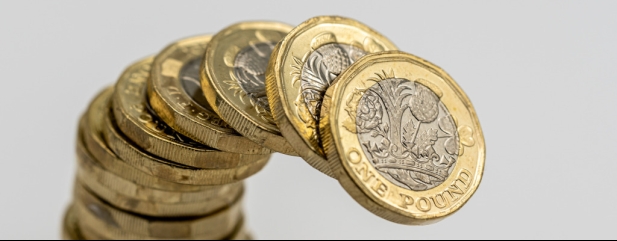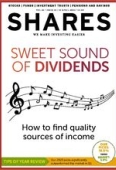Archived article
Please note that tax, investment, pension and ISA rules can change and the information and any views contained in this article may now be inaccurate.
The story behind sterling’s big move to 11-month highs versus the dollar

Sterling is on a comeback trail against the dollar, reaching 11-month highs against the US currency on divergent rate expectations. The move to reclaim the $1.25 mark is a combination of strength in the pound and weakness in the dollar.
The recent banking crisis started across the Atlantic with the collapse of Silicon Valley Bank and the US regional banking sector is perceived as more vulnerable than UK banks.
This means the Federal Reserve may have to prioritise its role in preserving financial stability over pursuing further rate hikes to firmly stamp out inflation. The upshot is the market is now pricing in at least one more rate hike from the UK versus no more from the Fed in the near-term.
UK economic data has been more resilient than expected against a more settled political backdrop, with progress on relations with the EU over Northern Ireland and the disastrous mini-Budget becoming more of a distant memory.
The latest survey from the British Chambers of Commerce showed just over 50% of UK companies expect their turnover to grow in the coming months. Strong private consumption saw fourth quarter GDP estimates upgraded by 0.1 percentage points at the end of March. Deutsche Bank recently updated its forecasts and no longer expects the UK economy to contract in 2023.
At the same time, US data has come in weaker than expected. Since the start of April manufacturing PMI (purchasing managers’ index) data showed factory activity levels contracting more than expected, while the services sector expanded less than forecast and job openings were lower than anticipated at 9.93 million against the 10.49 million estimate.
It is also worth noting the US has already made more progress in its battle against inflation – the year-on-year reading of US CPI for February was 6% against an unexpectedly higher 10.4% for the UK.
In part this reflects the UK’s greater exposure to energy prices, with the US benefiting from much higher levels of domestic supply.
Stronger sterling may in itself help reduce inflation as it decreases the cost of buying in goods and services from abroad. It could, however, be a headwind for the FTSE 100 as it diminishes the relative value of its dominant overseas earnings.
Consultant Capital Economics says investors should not get too used to the current situation: ‘Although the Fed may now be done with rate hikes, in most previous tightening cycles the dollar continued to appreciate even after short-tern US interest rates peaked.
‘Our judgement is that “safe haven” demand in a global downturn is likely to prove the dominant factor in currency markets over the coming months, driving the dollar (and the yen) higher in the near term.’
Important information:
These articles are provided by Shares magazine which is published by AJ Bell Media, a part of AJ Bell. Shares is not written by AJ Bell.
Shares is provided for your general information and use and is not a personal recommendation to invest. It is not intended to be relied upon by you in making or not making any investment decisions. The investments referred to in these articles will not be suitable for all investors. If in doubt please seek appropriate independent financial advice.
Investors acting on the information in these articles do so at their own risk and AJ Bell Media and its staff do not accept liability for losses suffered by investors as a result of their investment decisions.
Issue contents
Book reviews
Editor's View
Feature
Great Ideas
- Buy Empiric at a big discount to the other main player in student property
- Laboratory owner offers a cheap way into a growing specialist market
- Brunner: a great way to invest in stocks around the world on the cheap
- Rathbones raises its sights with £100 billion Investec wealth deal
- Our top picks for 2023 have made a superb start to the year
 magazine
magazine








